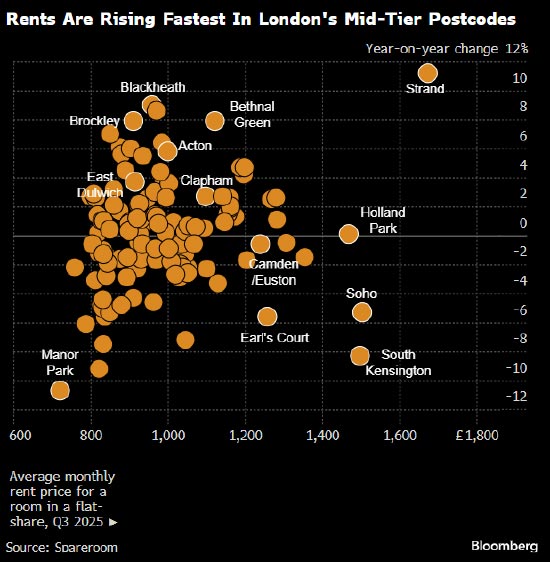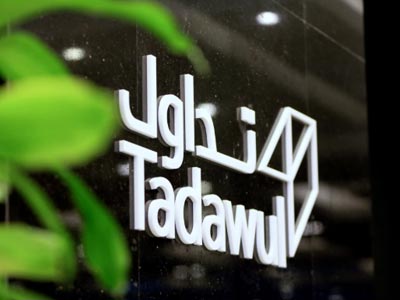London's most sought-after neighbourhoods are now only affordable for the wealthiest tenants, and the impact is spreading outward.
Analysis of data from the shared accommodation website Spareroom shows that squeezed tenants are being forced out of core postcodes to areas like Brockley and Bethnal Green, and the transmission of rental pressure is gradually eroding the UK capital's remaining "affordable" rental space.
A director at Spareroom said: "Typically, when tenants face rental stress, rents fall the most in the most expensive areas and rise the fastest in the cheapest. But beyond that, tenants are forced to move out of their preferred areas to more affordable neighbourhoods where rents are slightly lower."
However, even these "relatively affordable" areas won't last long: rents for studios in mid-range areas of London (those renting between £876 and £966 per month) are rising the fastest. In the year to the third quarter, rents for studios in these areas rose by an average of 1.3%, outpacing increases in core postcodes and countering the downward trend in rents in London's most affordable areas.
These findings shed new light on the pressures facing UK tenants, who are forced to compete for a dwindling supply of housing. The problem is particularly acute in London: according to Spareroom, the average monthly rent for a studio in the capital is around £1,000 (US$1,328). This exacerbates already high living costs and makes it even harder for aspiring homebuyers to save for a deposit.
Clapham in South London, for example, once a popular choice for young tenants, is now unaffordable for many, with the average studio rent exceeding £1,000 per month. Spareroom data shows that tenants seeking lower rents in similar neighborhoods are moving to East Dulwich, four miles away, where studios are £183 cheaper, saving them around £2,200 a year.

The migration of tenants to mid-range postcodes has driven rents in these areas soaring. In Blackheath, a leafy neighborhood in southeast London, the monthly rent for a studio is now £959, a 9% year-on-year increase, meaning tenants are paying an additional £950 per year. The situation is similar in nearby Brockley, where studio rents have risen nearly 8% to £911 per month.
In contrast, Spareroom reports that rents in some high-priced areas popular with university students and young professionals, such as Camden in the city center, have seen slight declines over the same period. Shared studios in Camden can cost over £1,200 per month.
With even the cheapest studios in London now costing over £700 per month, many people are abandoning the city altogether. Spareroom reports that demand for rentals has surged in commuter and suburban areas like St Albans and Brentwood.
Official private rental data released in August indicates that the typical renter household will spend nearly 42% of their income on rent in 2024, significantly higher than the English average of around 36%. In four London boroughs—Westminster, Wandsworth, Camden, and Hammersmith & Fulham—the proportion exceeds 50%, and in Kensington and Chelsea, home to the UK's most expensive properties, it's close to 75%.
Landlords blame the government for exorbitant regulations, exacerbating the problem. They also worry that Chancellor of the Exchequer Rachel Reeves will impose National Insurance contributions on rental income in her November 26 budget to repair the public finances. Many landlords are exiting the rental market and selling their properties.
Hutchinson said: "Due to a chronic undersupply of rental properties in London, rents remain stubbornly high, making it nearly impossible to meet the affordability standard of 'renting no more than 30% of wages.' The hardworking workers who make London tick have little choice but to leave."




